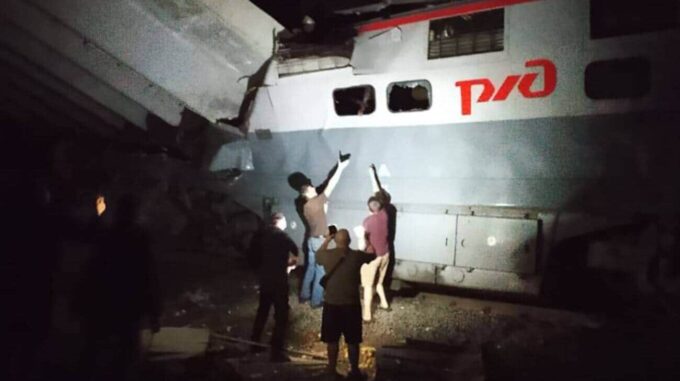After the tragic bridge collapse in the Bryansk region, Russian Railways began distributing new instructions for passengers, which have sparked outrage and sharp criticism from experts and the public

The agency responsible for railway transport in Russia now recommends that passengers change their posture in their compartments to reduce risks during potential accidents or emergencies. Last night, June 1st, a major tragedy occurred in the Bryansk region — the collapse of a bridge beneath which a passenger train was traveling. As a result of this accident, at least seven people died, and over 70 were injured of varying severity. Local authorities and emergency services did everything possible to save lives and assist the victims, but the aftermath of the incident has already been imprinted in the collective memory of the population. According to the latest reports, following this tragedy, "Russian Railways" has introduced an emergency briefing for its personnel: now there is a recommendation that was not previously officially announced. Passengers are advised to adopt a posture with their heads directed toward the door or exit of the compartment, rather than toward the window. This, supposedly, is intended to help reduce injuries in case of an emergency, such as damage or collapse of the compartment walls or roof. This information is disseminated by the propagandist and official publication "RIA Novosti," which quotes anonymous sources within the railway structure. At the same time, the Federal Passenger Company (FPC), which is part of Russian Railways and is responsible for passenger train service, assured that the official guidelines for conductors remain unchanged and that no new rules have been introduced. What should be understood from this situation? It is known that during the night of the tragedy, the passenger train passed under the collapsed bridge, and this accident has become the most significant in recent years in the region. According to various sources, the cause of the collapse could be deterioration of the bridge supports due to wear, negligence, or technical failure, but investigations are still ongoing. For now, despite official assurances, many questions remain among the public. Why is a new, less traditional briefing being introduced now, and how effective is it in saving passengers’ lives? And are such recommendations, which seem to contradict basic safety logic, more political maneuvers or signs of psychological pressure? Many believe that in the case of a serious accident, it is more important not just to change posture, but to create real safety conditions and modernize infrastructure. Meanwhile, the tragedy in the Bryansk region once again highlights the vulnerability of Russia’s transportation system and the need for a more systematic approach to safety. Instead of new recommendations for passengers, perhaps efforts should be directed toward upgrading and repairing bridges, increasing oversight of the technical condition of tracks and rolling stock. After all, human lives are the highest value, and any negligence in this sphere can cost someone both health and life. It is still too early to say how the government and authorities will respond to this crisis situation. However, one thing is clear: from now on, the public and passengers will closely monitor safety recommendations, as the tragic incident serves as a reminder that protecting one's own life must come first, regardless of official instructions and political directives.

